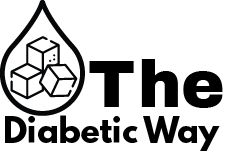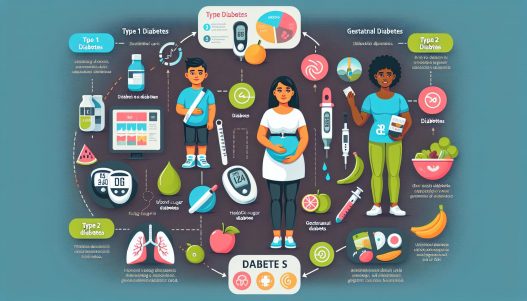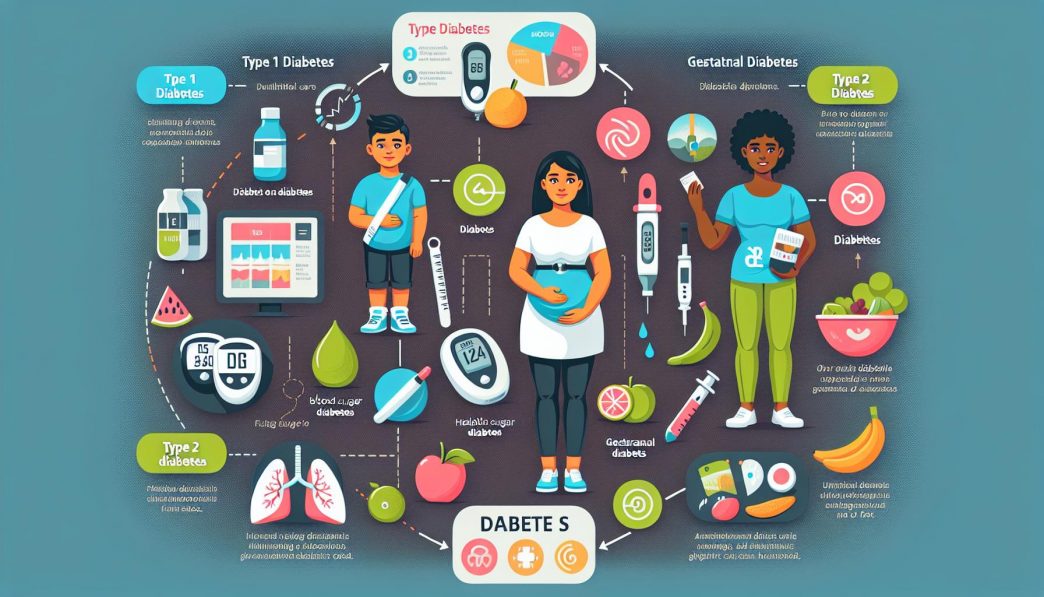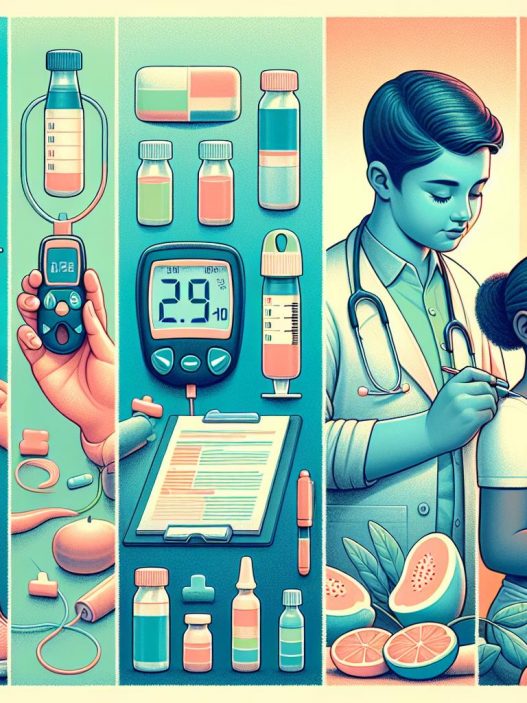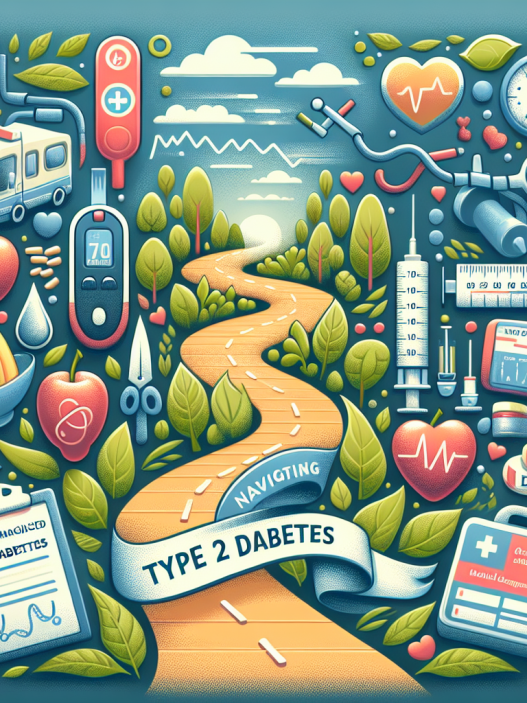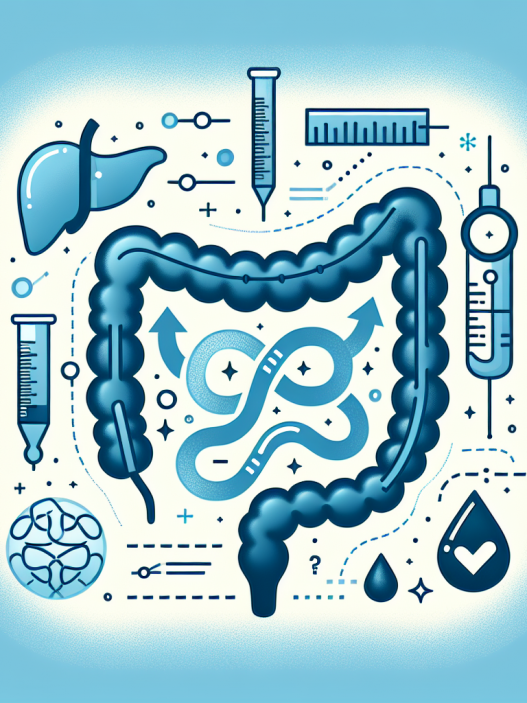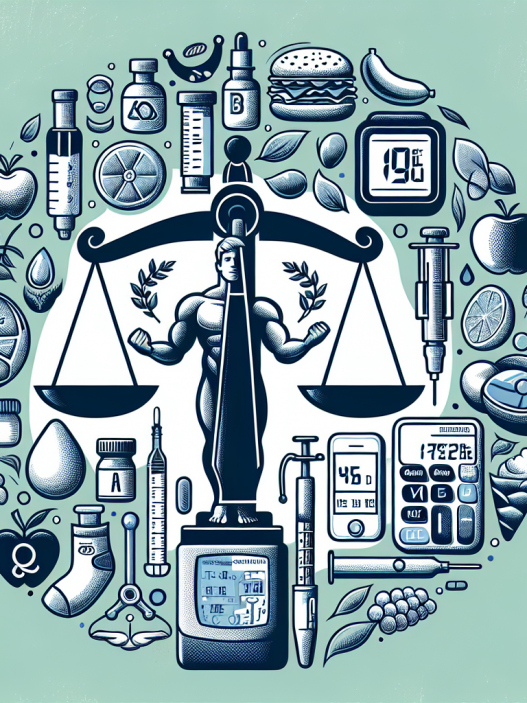# Understanding the Spectrum of Diabetes: From Type 1 to Gestational and Beyond
Diabetes is a multifaceted condition that affects millions globally, representing a spectrum that includes various types and stages. From Type 1 and Type 2 diabetes to lesser-known varieties such as prediabetes and gestational diabetes, understanding these conditions is essential for effective management and prevention. In this comprehensive article, we will delve into the different forms of diabetes, their causes, risk factors, symptoms, and available treatments, ensuring you have all the information at your fingertips.
Understanding Type 1 Diabetes: Causes and Management
Type 1 diabetes is an autoimmune condition that predominantly develops in children and young adults, although it can occur at any age. The body’s immune system mistakenly attacks insulin-producing beta cells in the pancreas, leading to little or no insulin production. The exact cause remains unclear, but a combination of genetic predisposition and environmental triggers, such as viral infections, is believed to play a role.
Managing Type 1 diabetes involves a rigorous regimen of insulin therapy, continuous glucose monitoring, and lifestyle adjustments. Patients must learn to balance carbohydrate intake with insulin doses to avoid swings in blood sugar levels. Continuous education about nutrition, exercise, and diabetes management is crucial to ensure optimal health and prevent complications associated with unmanaged diabetes.
Exploring Type 2 Diabetes: Risk Factors and Prevention
Type 2 diabetes is the most prevalent form and typically develops in adults, although it is increasingly being diagnosed in children and adolescents. This condition arises when the body becomes resistant to insulin or when the pancreas cannot produce enough insulin to maintain normal glucose levels. Key risk factors for Type 2 diabetes include obesity, a sedentary lifestyle, poor dietary choices, and a family history of diabetes.
Prevention strategies for Type 2 diabetes focus on lifestyle modifications. Regular physical activity, a balanced diet rich in whole grains, fruits, vegetables, lean proteins, and healthy fats can significantly reduce the risk of developing this disease. Maintaining a healthy weight is also critical, and for those at high risk, targeted interventions such as weight loss programs or prediabetes education can make a significant difference.
Gestational Diabetes: Understanding the Risks During Pregnancy
Gestational diabetes is a temporary condition that occurs during pregnancy when the body cannot produce enough insulin to meet the extra demands of insulin during this period. Women who are overweight, have a family history of diabetes, or have previously had gestational diabetes are at a higher risk. The condition usually develops between the 24th and 28th week of pregnancy and can pose risks to both mother and baby if not managed appropriately.
Management of gestational diabetes includes monitoring blood sugar levels, dietary modifications, and regular exercise. In some cases, insulin injections may be necessary. After childbirth, blood sugar levels generally return to normal; however, these women are at a higher risk of developing Type 2 diabetes later in life. Regular follow-up and lifestyle adjustments post-pregnancy are crucial for long-term health.
Understanding Prediabetes: A Warning Sign
Prediabetes is a critical condition that often precedes Type 2 diabetes, where blood sugar levels are higher than normal but not yet high enough for a diabetes diagnosis. It is often asymptomatic, making it easy to overlook and leading to late-stage diagnosis when complications arise. The key risk factors include obesity, an inactive lifestyle, and a family history of diabetes.
Early detection of prediabetes is essential to prevent its progression to Type 2 diabetes. Lifestyle changes focusing on diet and exercise are effective strategies for reversing prediabetes. Even modest weight loss (5-7% of body weight) and increased physical activity can significantly reduce the risk of diabetes development. Healthcare professionals often recommend regular screenings for individuals at high risk to catch prediabetes early.
The Importance of Continuous Monitoring: Technology in Diabetes Management
With advancements in technology, managing diabetes has become increasingly efficient and user-friendly. Continuous Glucose Monitors (CGMs) allow individuals to track their blood sugar levels in real-time, providing valuable data that can inform immediate dietary or insulin decisions. Insulin pumps have also revolutionized the way insulin is administered, enabling easier and more accurate dosing.
Moreover, health apps that record dietary habits, physical activity, and insulin administration facilitate better self-management of the condition. By utilizing these technologies, patients can empower themselves to take control of their diabetes management more effectively and prevent complications that arise from erratic glucose control.
By expanding awareness and understanding of the spectrum of diabetes, from Type 1 to gestational, individuals can actively participate in their health management and work toward a healthier future. Preventative measures, early detection, and innovative management techniques are crucial components in the fight against this widespread condition, fostering improved control and quality of life for those affected by diabetes.
In conclusion, armed with knowledge about the spectrum of diabetes, individuals and healthcare providers can make informed decisions, utilize modern technology for self-management, and commit to lifestyle changes that foster lasting health. Whether you’re navigating the complexities of Type 1 diabetes or managing gestational diabetes during pregnancy, understanding these conditions is the first step towards a proactive and empowered approach to health.
